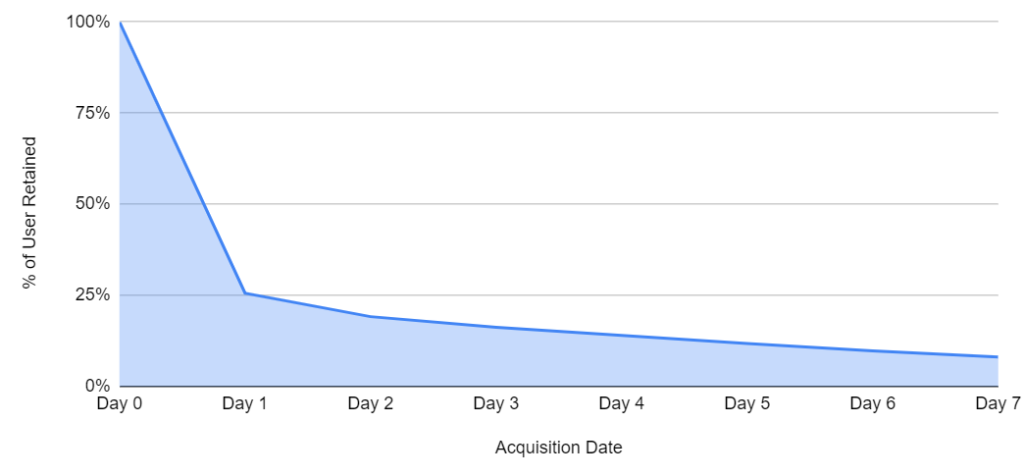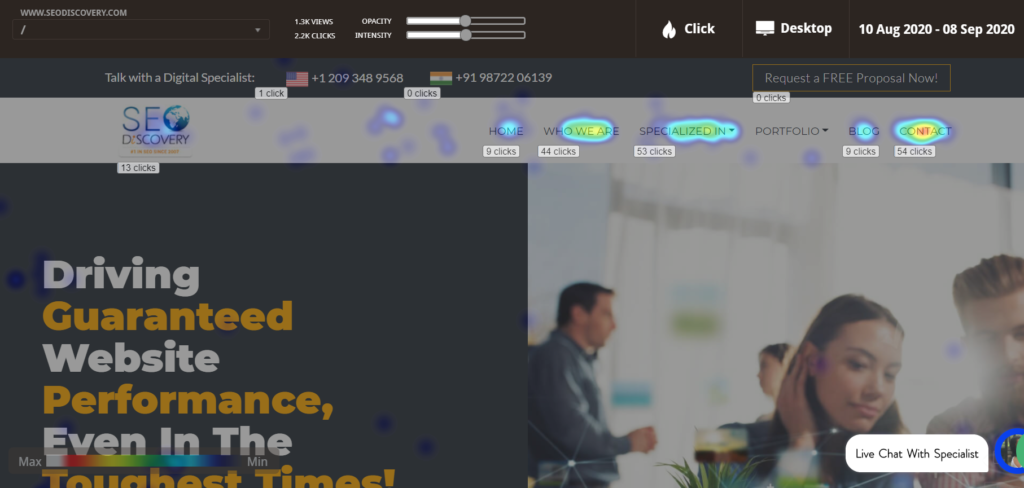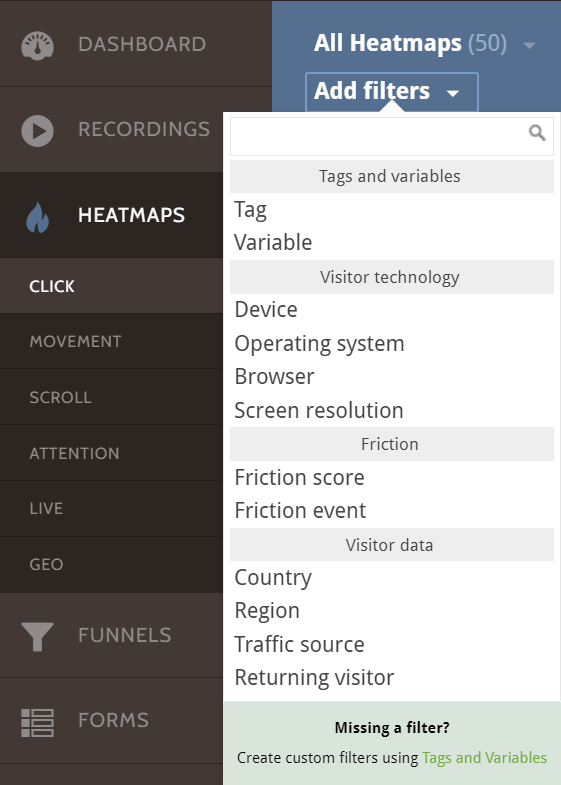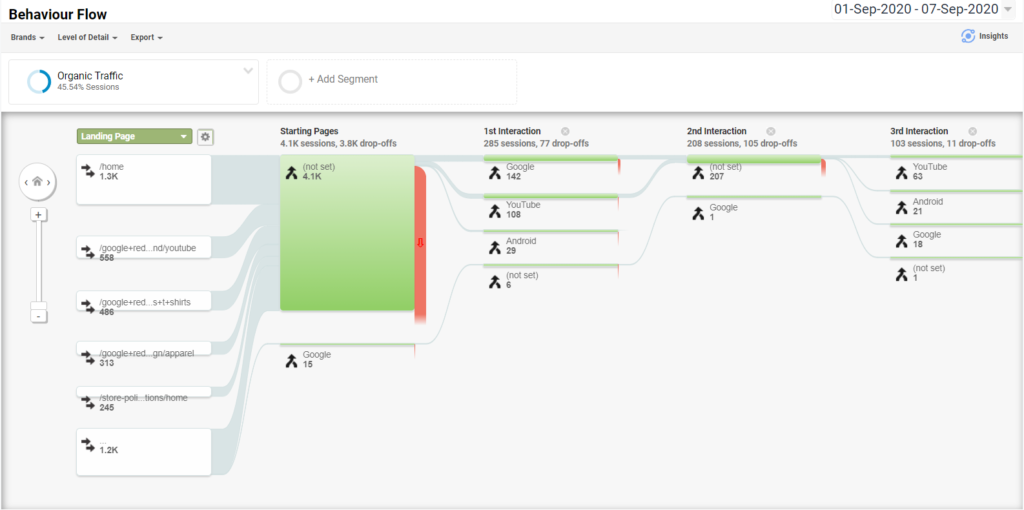Marketing Strategies
Instant messaging has taken over the world, but this is just the beginning
30-second summary:
- Chatbots will soon be ubiquitous in written business communication, and they present a paradox that flips everything consumers think they know about automation on its head.
- Customer input to a company is valuable information, and using messaging apps, customer feedback can also become actionable. By interacting with a bot, a customer is leaving an eternal record of their input, whatever it is, in a system that can read, analyze, and internalize the information.
- Furthermore, instant messaging apps and VoIP present the possibility of integrating video or phone calls into your communication. The combination of fluid written conversation and video has opened the door to digital transmission in many fields traditionally reserved for face-to-face interactions.
- Instant messaging has a fluidity that resembles that of spoken conversation. This fluidity is coming to good use now, especially for small businesses, which operate by one-on-one interactions, for which investments in big and bulky IT-systems are beyond superfluous.
The conversation surrounding the digitization of society has sounded in classrooms, newsrooms, and marketing departments for decades. During the pandemic, the process was accelerated as instant messaging came to the rescue, earning much-justified praise for helping people maintain connections even at a distance.
If there is one thing the process has taught us, it’s that the future has a way of sneaking up on us. So what will messaging look like, before we even know it?
The value of chatbots
Chatbots will soon be ubiquitous in written business communication, and they present a paradox that flips everything consumers think they know about automation on its head.
Generally, many people think the bots reflect over-automation and less-personalized service. Yet regular, human employees at corporations usually have very standardized, canned responses as well, offering only a veneer of personal service.
Chatbots reveal that the truly important part of the communication between a business and its customers is what the customers have to say, and bots’ role will become increasingly important.
Customer input to a company is valuable information, and using messaging apps, customer feedback can also become actionable. By interacting with a bot, a customer is leaving an eternal record of their input, whatever it is, in a system that can read, analyze, and internalize the information.
Instant messaging apps and VoIP provide an added layer of personalization
Furthermore, instant messaging apps and VoIP present the possibility of integrating video or phone calls into your communication. The combination of fluid written conversation and video has opened the door to digital transmission in many fields traditionally reserved for face-to-face interactions.
Tele-health, yoga-classes, and education are but a few examples of services ready to adapt, and they quickly managed to deploy instant messaging.
Experiences resembling one-on-one interactions, but still taking place at a distance, are essential and more useful than ever before. This will remain true well after COVID, as businesses and individuals alike become accustomed to the efficiency and effectiveness of such interactions.
Until now, messaging has mostly involved replicating real-world communication in the virtual world as seamlessly as possible.
But what if virtual communication were actually an improvement of physical communication? Imagine having a live call with someone across the globe who speaks a different language.
In real-time, the software can recognize the speech, anachronistically translate it, intelligently adjust for tone, prevent misunderstanding, or warn you that you might be stumbling into a cross-cultural faux pas.
The software could be intelligent and integrate with your calendar. As soon as you agree to meet someone for dinner, automatically, a reservation is made at your favorite restaurant and the event is added to your calendars.
This technology will be made available sooner than we think, and messaging apps will be the ones to implement them.
Instant messaging to play a major role in the evolution of communication
Messaging services will become the bridge between impersonal email and human touch. There is a reason messaging apps consume the most significant part of people’s internet use.
Whether consumers use social media platforms, dating apps, or office communication systems, it’s the messaging that gets people hooked.
Instant messaging has a fluidity that resembles that of spoken conversation. This fluidity is coming to good use now, especially for small businesses, which operate by one-on-one interactions, for which investments in big and bulky IT-systems are beyond superfluous.
Though it might not seem like it, society is still new to digital communications. The technology is in its infancy, and companies and individuals alike are still figuring out how to harness it in the best way.
By expanding its functionality and integrating instant messenger services to more facets of society, we improve the quality of the conversation between people, businesses, and institutions—one more step along the path to enhancing society with digital technologies.
Djamel Agaoua is the CEO of Rakuten Viber, one of the world’s largest mobile applications with 800+ million users worldwide, offering a range of features such as one-on-one chats, video calls, group messaging, social shopping, and updates. A veteran executive with a track record of growing innovative global techs, Djamel is a private investor and sought-after board member, advisor, and speaker.
The post Instant messaging has taken over the world, but this is just the beginning appeared first on ClickZ.
Marketing Strategies
OpsStars Virtual Event Preview: Q&A With Rachael McBrearty, Chief Customer Office At LeanData
/
Now in its fifth year, OpsStars has grown into a must-attend event operations and revenue-focused executives turn to for targeted education and networking./
Demand Gen Report caught up with Rachael McBrearty, one of the LeanData executives shaping the agenda for the event, to get a preview of what attendees can expect during the virtual event on October 20-21—including presentations from high-growth B2B brands Zoom and Docusign.
Demand Gen Report: RevOps was the hot topic at OpsStars last year. How does RevOps fit into LeanData’s vision today?
McBrearty: Last year at OpsStars, we were really proud to spotlight Revenue Operations as an important new operating model for growth in B2B – and the role operations will play in enabling it. Much of our agenda centered around “The Journey to RevOps” as the event’s topline theme.
Fast forward nearly one year, and we’re seeing even greater momentum behind the RevOps movement. The COVID-19 pandemic drove a greater imperative for sales and marketing leaders to improve go-to-market alignment to support growth in a challenging economy. We’ve also seen RevOps expand further into the enterprise. Management consulting firms like Boston Consulting Group have even launched cross-practice initiatives around RevOps to support some of the world’s biggest companies in moving to this model.
Working with our customers, we spotted the RevOps trend early on – even before it had a name! From this vantage point, we strongly believe RevOps will become the dominant operating model for driving predictable, efficient revenue growth in B2B.
DGR: “The Rise of Ops” – what’s the meaning behind your OpsStars 2020 theme?
McBrearty: This year we wanted to shine a spotlight on operations professionals themselves – and the increasingly strategic role they play in the revenue process.
Ops is really the backbone of go-to-market strategy and execution – and ultimately revenue growth.
Even more so in recent years, as this role supports increasingly sophisticated and complex sales and marketing strategies and programs. Yet Ops still operates largely behind the scenes.
We see this changing, however, as Ops play a more visible role and increasingly takes a seat at the table. This year’s OpsStars will recognize “the rise of ops” and their role as superheroes of the modern revenue engine.
DGR: Can you tell our audience more about the “virtual” experience planned for OpsStars attendees this year?
McBrearty: Virtual events are new for everyone this year – we’re all learning as we go! However, we put a great deal of thought into the best way to structure OpsStars in this new format.
Networking is one of the key reasons people attend OpsStars, so we wanted our attendees to come together as much as possible in a virtual setting. For example, although the event is held across two days, we’ve limited each day to four hours to make it easier for people to carve out time to attend and participate without distraction. We also have a number of workshops to bring people together, and we’ll set up a Slack channel to encourage conversations around key topics amongst attendees, presenters and sponsors.
Now in its fifth year, OpsStars has always been an event “by Ops, for Ops.” Through a virtual platform, we aim to continue our tradition of bringing together sales, marketing, customer and revenue operations leaders to share best practices, career development and networking.
DGR: Lead management seems prominent on the OpsStars 2020 agenda. Has that expanded from last year?
McBrearty: Yes, we’re so fortunate to have the ops teams from Zoom and DocuSign giving attendees a peek under the covers at how their teams successfully managed unprecedented spikes in demand nearly overnight due to the COVID-19 pandemic. Both for Zoom and DocuSign, their ability to scale lead management to keep up with this level of demand was critical to powering their rapid response to incoming requests.
Nearly all companies were impacted by COVID, however, and automated lead management is essential to helping them pivot to go-to-market in days, or even hours, as business conditions change. This level of agility has become critical for business continuity and execution in these uncertain times.
DGR: Lead-to-Account Matching & Routing recently became an “official” martech category. This is great validation for LeanData. What do you think it says about the future growth of the category.
McBrearty: Yes, this was a major milestone for our company! TOPO (now part of Gartner) released the first in-depth Market Guide for Lead-to-Account Matching and Routing in August. Up to now, this technology has been somewhat of a “best-kept secret,” with B2B adoption estimated at 48 percent. However, TOPO says it is now one of the most critical applications in the tech stacks of modern sales and marketing organizations. We were gratified to see TOPO named LeanData the dominant vendor in this space.
This is no fledging tech category – it’s been in the works for the better part of a decade. But TOPO’s report is a significant validation of what we and our customers have worked hard to create. We believe formalizing Lead-to-Account Matching and Routing as an “official” tech category, with de facto standards and best practices, will create more awareness around the technology and make it easier for more companies to adopt.
Marketing Strategies
How to adapt your SEO strategy to navigate through the pandemic
30-second summary:
- When you’re starting with your adapted SEO strategy, it’s important to acknowledge the changes in your working environment. All remote teams need to evaluate their communication needs to improve their efficiency in the ‘new normal’.
- You don’t want more unfortunate surprises during turbulent times. Meaningful reporting can connect content, SEO, marketing, and web activities to give everyone the visibility to plan for future projects.
- The idea is to reduce unnecessary meetings to empower your team to work on their own. Start by communicating your SEO strategy and what everyone will work on.
- One of the first changes should be to look at your website and your content to make it more relevant. Explain how COVID-19 is affecting your businesses and how you’re still supporting your clients.
Right after the initial shock of the pandemic, many businesses are reassessing their strategies to remain successful. Organic search can help you set up a successful SEO strategy to support your business’s recovery.
Conductor has written a post-pandemic SEO strategy playbook with practical tips to explore business opportunities through organic search.
Content created in partnership with Conductor.
The power of SEO during COVID-19
As we are all spending more time at home, Google searches are increasing. There is an estimate of 20 billion searches every day.
This is a great opportunity for businesses to capitalize search traffic to increase sales.
What’s more, SEO is a low-cost and very effective method to increase your brand awareness before you increase your ad spend.
What’s important though is to understand how COVID-19 has affected SEO and how to adjust your strategy.
Defining your remote communication style
When you’re starting with your adapted SEO strategy, it’s important to acknowledge the changes in your working environment. All remote teams need to evaluate their communication needs to improve their efficiency in the ‘new normal’.
Start with internal communications and the tools that will get your team more productive. Foster an environment of transparency and accountability and document the team’s workflows.
Improved visibility can help you prioritize the crucial tasks that you need to focus on. Moreover, the more transparent you are, the easier it becomes to collaborate with different departments towards shared objectives.
Conductor recommends the use of surveys to gather feedback about your website, your marketing campaign or even for content ideas. It’s a great way to plan for short and long-term projects while getting perspective from various teams.
All the findings can help you set up your communication style, how you’re interacting as a team and how you can be more productive.
Create meaningful reporting
You don’t want more unfortunate surprises during turbulent times. Meaningful reporting can connect content, SEO, marketing, and web activities to give everyone the visibility to plan for future projects.
It’s not enough to create reports that nobody is interested in reading. It’s time to build digestible reports that your stakeholders would appreciate.
There are many things that you can measure to support your SEO strategy. You can also work alongside different teams to discover interesting insights that can lead to multiple wins.
For example, working with the sales team can help you spot opportunities to appeal to potential customers. Search insights can help you create the right content while providing valuable data to your salespeople.
Keep in mind, your executives should include what your stakeholders want to see. It’s important to align your tactics with the key factors that will affect your business success, such as traffic, revenue, retention, etc.
Looking for creative reporting? The Conductor team is recommending the use of a five-minute video that can replace a time-consuming report.
Use it to describe your team’s performance and what you’re planning to do next.
Train your team to be self-sufficient
The best way to maintain your productivity in a remote environment is to train your team to be self-efficient. If there are many similar questions from your team, how about creating a report answering these questions?
The idea is to reduce unnecessary meetings to empower your team to work on their own. Start by communicating your SEO strategy and what everyone will work on.
Encourage your team to share their ideas and work on an action plan that will get the most of every team member.
Identify high priority changes
This is the best time to focus on what matters. Work with your team and your key stakeholders to define your priorities and how to spend more time on them.
It’s important to communicate all the changes with your customers to keep them up-to-date with what’s happening.
Start by answering the question:
What do customers want to know about my business and any recent changes related to COVID-19?
The answer can help you work on your internal and external communication to give everyone more clarity on what’s coming up.
One of the first changes should be to look at your website and your content to make it more relevant. Explain how COVID-19 is affecting your businesses and how you’re still supporting your clients.
Look at your current SEO strategy and adjust the keywords and content plan, if needed.
Review your online profiles and business listing to keep all relevant details up-to-date.
For example, ecommerce companies should update all the information around delivery details, product availability and potential offers.
If you are changing your working hours or your business focus, make sure you communicate the changes with your customers.
There’s no over-communication during a crisis.
Looking at the bigger picture
It’s not just about surviving the current situation. Your business should also look at the bigger picture of what’s coming up next.
It’s the best opportunity now for planning, reflection, and collaboration.
If you’re using Conductor, look at your workflows to understand the impact of the crisis in your visibility. Adjust your plans accordingly, if needed.
Stay on top of change with regular monitoring and use your SEO strategy to maintain long-term success for your business.
Ready to explore practical tips to improve your SEO strategy post-pandemic? Download Conductor’s SEO strategy playbook for additional ideas and templates.
The post How to adapt your SEO strategy to navigate through the pandemic appeared first on ClickZ.
Marketing Strategies
Why behavior analysis is important online business
30-second summary:
- A typical consumer now owns an average of 3.6 devices which means a person’s journey may start from a laptop and end on a mobile or a tablet.
- In the ecommerce business, the cart abandonment rate is the thing that haunts most of the business owners.
- Developing analytical skills can help you better manage these obstacles.
- MD of SEO Discovery shares a guide to help you understand Cohort Analysis and Behavior Analysis to eliminate roadblocks and improve engagement.
In today’s digital age, the customer journey is getting complex day by day and if you are doing online business then it’s vital to understand your customer journey. A typical consumer now owns an average of 3.6 devices which means a person’s journey may start from a laptop and end on a mobile or a tablet.
In the ecommerce business, the cart abandonment rate is the thing that haunts most of the business owners. According to Statista, 88.05 percent of online shopping orders were abandoned in March 2020 worldwide, which means over 88% of people added selected products into the cart and left without buying for various reasons. This is a massive business opportunity loss for ecommerce players.
Developing analytical skills can help you better manage these obstacles. Without adequate knowledge of analytics, your marketing won’t work because you won’t know what worked and what didn’t work. All the marketing suits come with analytics tools to help perceive the behavior, engagement metrics, and demographics of the visitors coming to a website. The most common web analytics tools are Google Analytics, Adobe Analytics, Kiss Metrics, and Mixpanel. They generally come with the following features and capabilities:
- Real-time analytics
- Mobile analytics
- Attribution modeling
- Segmentation
- Ecommerce tracking
- Funnel analysis
- Cohort analysis
- Cross-device tracking
- In-page analytics (Session recording, click tracking, heatmaps)
- Goal conversion tracking
- Event tracking
- A/B testing
Every feature has its own data sets which can be compared to help you make informed decisions. Today we are going to understand Cohort Analysis and Behavior Analysis to eliminate roadblocks and improve engagement.
What is a Cohort Analysis and why is it important?
Cohort analysis is a subset of users grouped by shared characteristics. It simply allows you to compare the behavior and metrics of different cohorts over time.
Cohort Analysis Example - Finding Engagement Drop
Let’s suppose you have an online food ordering website/app and using acquisition date (when users started their first sessions) cohorts you can find out when in the customer lifecycle your users tend to drop off.
The best way for visualizing this data is to chart out the retention curve, portraying retention over time.

This retention curve clearly reflects the most important insight – around 75% of the users stop using the website after the first day. We can see a downfall in the engagement. Hence, it’s evident to improve the overall experience and abet customers through daily offers/coupons to boosting retention.
Cohort Analysis Comparison - Organic vs Direct
The below cohort analysis indicates that organic traffic has a better retention rate than direct.

Visitor behavior analysis and its importance
It’s a process of tracking user behavior on a website and there are some great tools in the market that give accurate information. Tools like Hotjar, MouseFlow, Crazy Egg record visitor sessions to see how visitors are navigating on the website. They also offer click tracking and heatmaps to analyze the most engaging and ignored (skipped) elements on a page.

If you look at the above heatmap, you would notice that no one bothered to click on “PORTFOLIO” in the top menu, which means people aren’t interested in see the portfolio. Maybe we have to replace it with something more interesting (like Case Studies, Achievements, and more) which grabs a visitor’s attention. These kinds of insights help you add/remove elements to improve page engagement.
Using filters, you can further segment your audience to dig deep and pull out actionable insights, see those filter below:

In Google Analytics, behavior flow gives you a visual presentation of how people are navigating on your website. You can apply segments to get a deeper view of their behavior and it also enables you to apply different dimensions on top of these segments to get actionable insights.

The power of these analytical tools lies in the fact that it allows you to view which customers leave and what’s making them leave your website/app – so that you can fix it. You can also hire a professional digital marketing agency that can help you find these hurdles and remove them to enhance your overall engagement.
Mandeep Singh is the MD of SEO Discovery. He’s mission is to provide affordable digital marketing services to startups and SMEs. He’s an official member of Forbes Agency Council. You can find him on LinkedIn.
The post Why behavior analysis is important online business appeared first on Search Engine Watch.
-
 Business2 months ago
Business2 months agoBernice King, Ava DuVernay reflect on the legacy of John Lewis
-
World News2 months ago
Heavy rain threatens flood-weary Japan, Korean Peninsula
-
 Technology2 months ago
Technology2 months agoEverything New On Netflix This Weekend: July 25, 2020
-
Finance4 months ago
Will Equal Weighted Index Funds Outperform Their Benchmark Indexes?
-
Marketing Strategies9 months ago
Top 20 Workers’ Compensation Law Blogs & Websites To Follow in 2020
-
 World News8 months ago
World News8 months agoThe West Blames the Wuhan Coronavirus on China’s Love of Eating Wild Animals. The Truth Is More Complex
-
Economy11 months ago
Newsletter: Jobs, Consumers and Wages
-
 Finance10 months ago
Finance10 months ago$95 Grocery Budget + Weekly Menu Plan for 8

